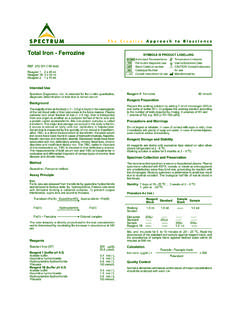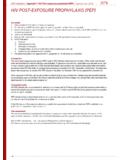Transcription of fogm blue shark - New Jersey Scuba Diving
1 blue shark Prionace glauca (Linnaeus) 1758 Bigelow and Schroeder, 1948 p. 282.] [Garman, 1913 pl. 3, figs. 1-3 (as Galeus glaucus ).] Figure 12 - blue shark (Prionace glauca ), male, about 7 feet 2 inches long, off Marthas Vineyard. A, third left-hand upper tooth, counted from mid-point of jaw; B, ninth left-hand upper tooth; C, third left-hand lower tooth; and D, eighth left-hand lower tooth; about times natural size. From Bigelow and Schroeder. Drawings by E. N. Fischer. Description The blue shark is slender-bodied, thickest about its mid-length, and tapers toward head and tail (a shape usually named "fusiform").
2 Its snout is long with rounded tip. Its first dorsal fin is of moderate size, standing far back with the mid point of its base about midway between the inner corners of the pectorals (when these are laid back) and the points of origin of the pelvic fins. The second dorsal fin is less than one-half as high as the first, and is about equal in size to the anal over which it stands. The pectorals are narrow and very long, their tips reaching back nearly as far as the rear corner of the first dorsal. The lower lobe of the caudal fin (measured along its anterior edge) is about one-half as long as the upper lobe; the latter is conspicuously notched near the tip, and both of the lobes of the caudal fin are slender tipped.
3 The teeth are large, sharp-pointed, with serrate edges, and distinctive in shape. The uppers are so closely spaced that the bases of adjacent teeth [page 39] overlap. The median upper tooth is nearly symmetrical, but those along the sides of the mouth have strongly convex outer margins, and deeply concave inner margins, while their points curve sharply outward toward the respective corner of the mouth. The lower teeth are narrower, more nearly symmetrical, and nearly erect. Color Living specimens are dark indigo blue along the back, shading to a clear bright blue [90] along the sides; but this beautiful hue changes to a slaty or sooty gray soon after death.
4 The lower surface is snow-white, but with the tips of the pectorals dusky and the anal fin partly sooty. Size The usual length at birth seems to be between 1 and 2 feet. [91] blue sharks do not mature until they have grown to be 7 or 8 feet long, to judge from the sizes of the females that have been found with young; the longest we have handled was almost exactly 11 feet long. The fact that the greatest measured length so far reliably reported was only 12 feet 7 inches ( meters) suggests that repeated characterizations of the blue shark as commonly growing to 15 feet are an exaggeration.
5 If any grow to 20 feet, as is rumored, they must be giants of their kind. Remarks The very long slender pectorals of the blue shark , combined with its long narrow snout, the position of its first dorsal fin far back, and its brilliant blue color, give it an aspect very different from that of the tiger shark (p. 37), of the sharp-nosed shark (p. 40), the dusky or brown sharks (pp. 41-43), or that of any other carcharhinid shark that might perhaps straggle to the Gulf of Maine. Habits The blue shark is "encountered indifferently far out at sea and in continental waters, its wanderings no doubt directed chiefly by the search for food, though it may drift with ocean currents.
6 It is frequently seen at the surface, swimming lazily with first dorsal fin and tip of caudal out of water, or basking in the sun. There is no reason to suppose that it ever descends to any great depth." [92] they sometimes follow sailing ships for days on end, to pick up scraps, and their habit of gathering when a sperm whale was killed, to feed on the carcass, was proverbial during the days of the sperm whale fishery. [93] But their normal diet is smaller fishes, of whatever kinds may be available. In northern waters herring, mackerel, spiny dogfish, and various others have been found in their stomachs.
7 And we have several times seen a blue shark pick up a tagged cod, haddock or American pollock that we had put back in the water, on Georges Bank. The blue shark is viviparous, that is to say, the embryo has a well developed placenta attached to the mother. As many as 28 to 54 young have been reported in a litter in the Mediterranean. General range Cosmopolitan on the high seas in the warmer parts of all the oceans, including the Mediterranean; ranging northward to outer Nova Scotia and as a stray to the Banks of Newfoundland in the western side of the Atlantic; to England and Scotland in the east, with stray specimens reaching the Orkneys and southern Norway.
8 This, we think, is by far the most numerous of the large, oceanic sharks; it is the one with which the sperm whalers were the most familiar; the one around which many of the superstitions about sharks have developed; and the one with which we have had to do most often. Occurrence in the Gulf of Maine and along Nova Scotia Only one blue shark had been reported definitely from the Gulf of Maine in scientific literature, up to the time the first edition of this book was printed, though it was known to be rather common along outer Nova Scotia. But we have learned since then that it is a regular summer visitor to the southern and western parts of the Gulf, appearing occasionally in July, more often in August and September.
9 In 1928, for example, we caught one on Stellwagen Bank on August 26, saw one over the northern end of Jeffreys Ledge on September 2, and caught four on Platts Bank on September 3, with others in sight from the vessel at nearly all times throughout the day. And many more have been seen or caught subsequently, on Platts Bank, in Massachusetts and Cape Cod Bays, where 18 were reported to us during the summer of 1935, [94] on Georges Bank where blue sharks, swimming at the surface, are a familiar sight in summer; and on Browns Bank. Two have also been reported [page 40] to us recently from the coast of Maine, a few miles east of Casco Bay.
10 [95] We have never heard of a blue shark in the northeastern corner of the Gulf, in the Bay of Fundy, nor along western Nova Scotia, whence they may be barred by colder surface waters. But fishermen are familiar with them off the outer coast of Nova Scotia, both offshore, and also near the coast at the times when the warm surface water presses inshore. Blues were reported near Halifax, for instance, from time to time between August 15 and October 10, 1920, some coming close in to the entrance to the Harbor. And two specimens have been reported at Canso, [96] but whether the " blue dogs" described by local fishermen as common on the neighboring banks actually are this shark , or perhaps the porbeagle, seems doubtful.






